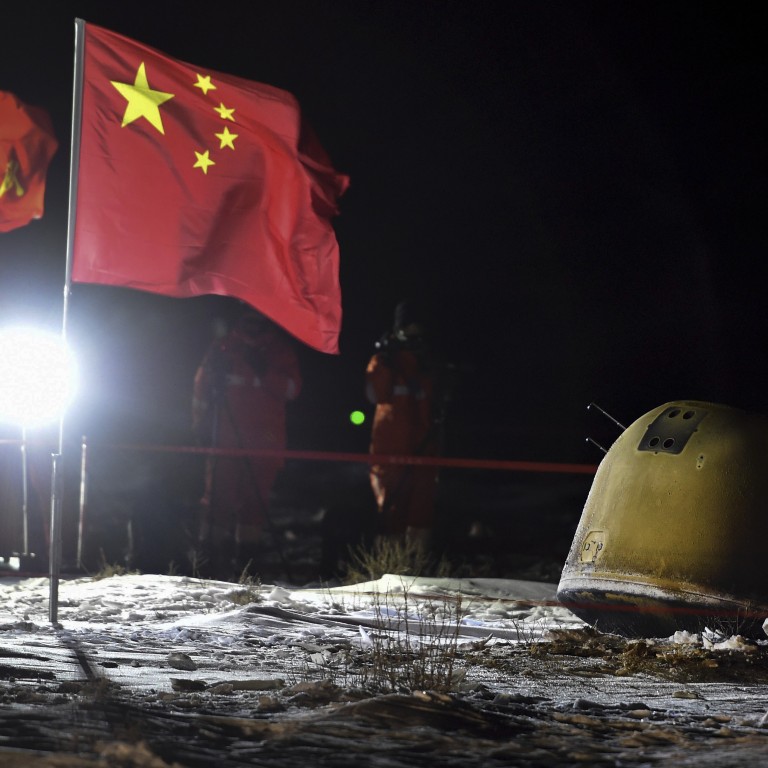
Chang’e 5: China says it will share its lunar samples with global scientific community
- ‘Outer space resources are the common wealth of all mankind,’ Wu Yanhua, deputy director of the China National Space Administration, says
- Some of the precious rocks will go on public display, he says
While most of the materials will go to Chinese research institutions, some will be put on public display and others will be shared with the global scientific community, or given as gifts to countries and organisations like the United Nations Office for Outer Space Affairs, Wu Yanhua, deputy director of the China National Space Administration (CNSA), told a press conference in Beijing.
“Outer space resources are the common wealth of all mankind,” he said. “The Chinese government is willing to share our lunar samples, including survey data, with organisations and scientists with the common goal of scientific analysis.”
After the success of the mission, Wu said the next phase of the Chang’e programme would involve four missions to test the technologies needed to establish a research station on the moon with China’s international partners.
The government’s new five-year plan included three planetary missions: to gather samples from an asteroid, conduct a fly-by of Jupiter and collect samples from visit Mars, Wu said.
Over the next two years the CNSA’s focus would be on completing a Chinese space station, which would require 11 launches: three cabin modules, four cargo spaceships and four manned spaceships, he said.
After that, it would look at whether to land humans on the moon, he said.
CNSA spokesman Xu Hongliang said at the press conference that Beijing was already working with Moscow on China’s Chang’e 7 and Russia’s LUNA-26 missions to explore the moon’s south pole, and welcomed collaboration with other countries on programmes like the international lunar station and deep space surveys.

Despite Wu’s promise to share the samples collected by Chang’e 5, it is unclear if the United States will be a beneficiary.
At the outset of the mission, on November 24, Nasa asked China via Twitter to share its data. But in response, Wu made reference to the US government’s “Wolf Clause”, which since 2011 has banned Nasa and other official American scientific bodies from cooperating with China.
“Whether we can cooperate depends on the policy of the US government,” he said. “Based on the principles of equality, mutual benefit, peace and win-win cooperation, we would like to sincerely and friendly work together with any US government organisation, corporate or agency, or their scientists and engineers.”
Lights out for China’s Chang’e 5 moon lander as day becomes lunar night
Before Chang’e 5’s successful mission, China had just a single gram of lunar material, which was gifted by the US government – from its 382kg collection – in 1978, on the eve of the two countries establishing formal diplomatic ties.
The samples collected by Chang’e 5 – from the volcanic Mons Rümker in the Ocean of Storms on the near side of the moon – are believed to be much younger geologically speaking than those gathered by US and Soviet missions. As a result they might provide scientists with fresh information about the history and evolution of the moon and perhaps even the Earth.
Wu said some of the lunar rocks would be stored in Shaoshan, Hunan province, the hometown of Mao Zedong, in honour of the former Chinese leader.

